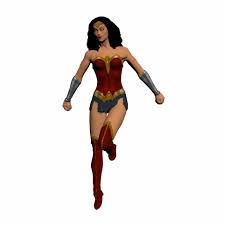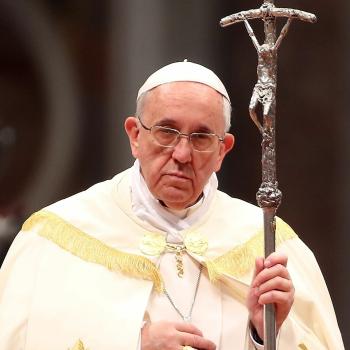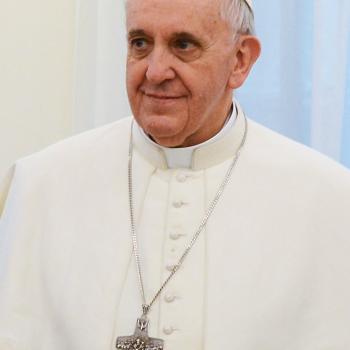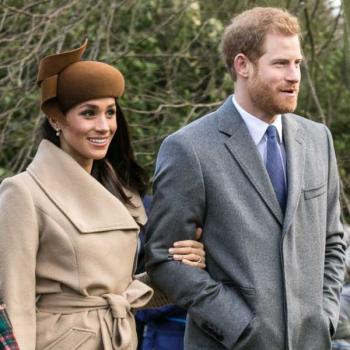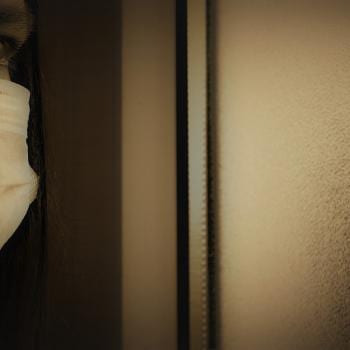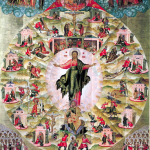With Wonder Woman as the hot film of the moment, it’s inevitable that we should revisit several conversations: about the value of “girl power” as a feminist mantra; about women and militarism; about the hyper-sexualization of the female action hero.
Of course, hysterical reactions of red-pill and MRA types who feel threatened by female superheroes, female fighters, all-female movie showings, and really women at all are inevitable as well, and painfully predictable. We can all guess what they have to say, and it isn’t especially interesting.
The more intellectually engaging critiques of stories like Wonder Woman, and of the warrior-princess mythos, tend to come from within the ranks of feminists. I think these critiques are important to note. However, as I will argue after a brief overview, I also believe that it is a mythos worth preserving.
The archetype of warrior princess, or warrior queen, is far older than even proto-feminism. In the Western pantheon, we have Athena herself. We have the Valkyries in the North. In The Iliad, the Amazons come to the aid of the Trojans.
In one version of the tale of Troy, the Amazon queen, Penthesilea, falls in love with her mortal foe, the Achaian Achilles. In German romantic playwright Heinrich Von Kleist’s Penthesilea, it is she who kills him – and afterwards, in a frenzy of sexual appetite and convoluted grief, devours his flesh.
In the Aeneid, we meet the warrior maid Camilla, who is ruthless on the battlefield. The men are terrified to take her on, both because of her battle-prowess, and because it’s a lose-lose situation to fight with a woman: whether the man defeats her, or is defeated by her, it is not a victory or defeat that can be considered, in that patriarchal culture, glorious. Virgil writes that Camilla finally falls because she becomes distracted by the gorgeous armor of her foe: “overcome by a girl’s love of finery” – an irony, in a story in which men are regularly fighting to the death to claim this or that piece of fancy weaponry.
From ancient warrior goddesses, to actual historical women warriors such as Artemisia, Boadicea, Zenobia, and Joan of Arc, to contemporary fantasy warriors such as Eowyn or Brienne of Tarth, the idea of the woman who competes in the explicitly male-dominant world of war looms large in the imagination. She may be a figure of terror, an “unwomanly woman” shaking the edifices of male power structures – or terrifying in her passion, death and sex being so closely intertwined, killing and dying and eating being metaphors for acts of eroticism. She may be held up for moral disapproval. She may be an inspiration to girls and women, an image of strength against injustice.
But for all our delight at riding with Eowyn and hearing the horns of Rohan ring, we can’t escape the reality that the archetype of the warrior-princess is linked to certain problematic cultural prejudices about war, about female sexuality, and about human ability.
The Pacifist Objection: that figures like Penthesilea of old or Wonder Woman today advance an ideal of female equality by making women into “honorary men.” If they can fight and kill, they are granted entry into full human status, center stage. If one is a pacifist, this is especially problematic, because it suggests that women not only earn the right to honor by doing what men do, but also by doing the worst things that men do: violence, destruction, and killing. Is it really a victory for feminism, if women are granted equal rights only insofar as they play by the rules of a game men made up?
The Sexualization Objection: Here, I quote from Christina Cauterucci, in “I Wish Wonder Woman Were As Feminist as It thinks It Is,” (Slate):
“To me, whatever chance Wonder Woman had of being some kind of feminist antidote to the overabundance of superhero movies made by and for bros was blown by its prevailing occupation with the titular heroine’s sex appeal. Characters frequently note that Gal Gadot’s Wonder Woman, who goes by Diana in the film, is “the most beautiful woman you’ve ever seen.” Her male companions in the fight against Germany’s WWI forces drool behind her back at the notion that there may somewhere be an island full of women who look like her, with no men in sight.”
In spite of the fact that actually being good at fighting might not make for the kind of physical appearance men usually prefer in women, note that women warriors in nearly all our fantasy girl-power myths and legends are hot. And in most contemporary representations, decked out in ridiculous clothing no sensible warrior-woman would ever want to wear, with skin strategically exposed as though catching a dude’s eye were so important as to be worth the risk of an arrow in the heart.
This is connected with the fighting-as-eroticism motif that Von Kleist’s play so disturbingly depicts. There is violence connected with sexual play, and the paraphernalia of war – swords, bows, arrows – and guns, today – suggest penetration, which it is a mistake to view as a uniquely male act, or at least one that can’t be appropriated by women. If Penthesilea eating Achilles represents the ultimate fear men have of women’s sexuality – that we will devour them, figuratively and literally – then the Hot Warrior Princess suggests a taming of the Amazon. An Amazon fighting to help men, as in Wonder Woman, is perhaps even more tamed. The depiction of the warrior princess as desirable to men is a re-appropriation of female sexuality by men.
Of course, a notable exception to this is George R. R. Martin’s character Brienne of Tarth, whose monstrous size and mannish musculature render her “freakish” in the eyes of those around her. She is taunted for her looks, and her battle-prowess only earns her enmity, not honor. This is a hard, realistic look at what it means to be a warrior woman for the woman herself – not as a stylized masculine fantasy.
The Ableism Objection: This recapitulates, to some extent, the other two arguments. Women can only take center stage if they show some special ability that is valued in a male-dominant society. Fighting? Check. Being hot? Check. Female empowerment ends up being a privilege for women who are attractive and healthy enough to step into those boots that were made for walking.
All three of these critiques are correct.
However, I still believe the Warrior Woman archetype has value, and that’s why it has been around for so long – and not only as a male fantasy.
While feminist heroes who perpetuate militarism and sexual fetishism are indeed problematic, it is specifically within a patriarchal and militarist power-structure that women are repeatedly disenfranchised, fetishized, and abused. Or sexualized. The warrior woman can become part of that structure herself, but it is also possible for her to be an outlier, an outlaw, one who moves beyond the boundaries set by men. Is it possible for her to be a “just war” feminist heroine? Yes, perhaps, back in the days of the Amazons. Not so much today, when war is almost inevitably unjust. That’s why we prefer our warrior queens with swords and breastplates. That’s why some of us might sneakily pretend to be Eowyn, while hacking down weeds with a machete. The emblems and reenactments of violence can be used as symbols of emancipation. They can help us to express the anguish and the yearning for freedom, the bursting of the bonds, the casting down of the mighty from their thrones.
Yes, a Christian should take seriously the moral mandate to lay down our lives and turn our other cheek. Yes, for the Christian feminist, no kind of violence is ever the answer; however, archetypally and symbolically the warrior-woman remains a comfort to us, at least at a certain stage of our journey. And perhaps she remains a part of us, always, regardless of our appearance and ability, even when we’re – theoretically – too old to be hacking things with machetes playing pretend.
Theoretically.
image credit: http://www.publicdomainpictures.net/view-image.php?image=171873&picture=warrior-woman

